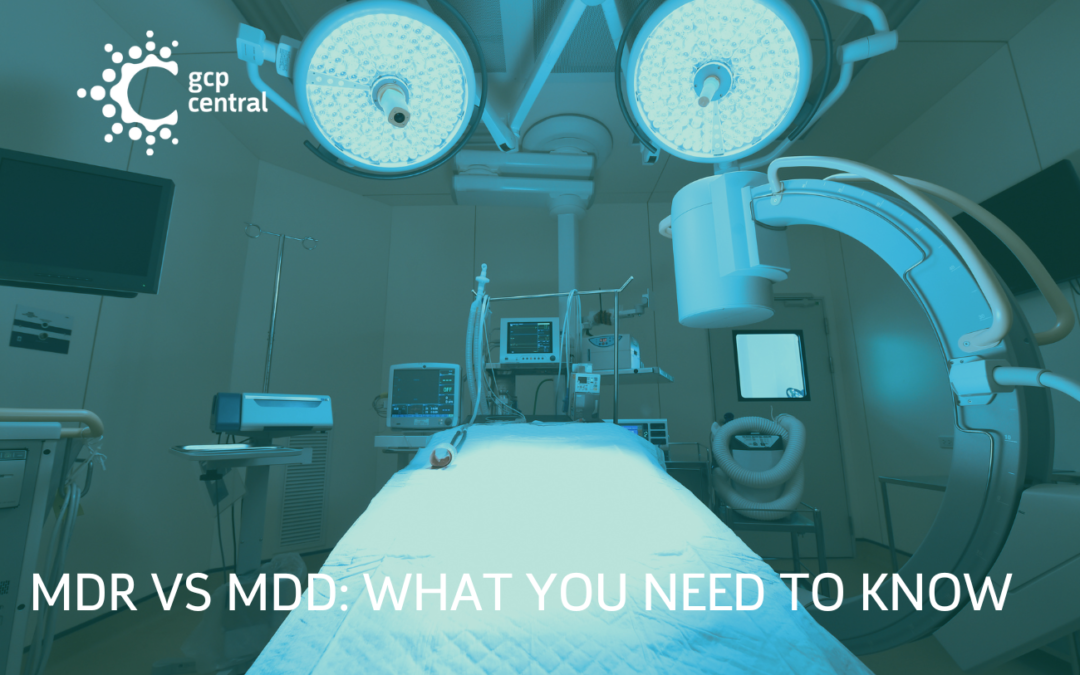The Medical Device Directive (MDD) has governed medical device regulation within the European Union since its inception in 1993. However, the evolution of technology and the healthcare landscape has rendered the MDD outdated. Consequently, a pressing necessity arises for a more comprehensive regulatory framework attuned to contemporary technological advancements.
A New Regulation
The emergence of software-enabled devices, exemplified by fitness tracking applications, was not envisaged during the inception of the MDD. In contrast, the Medical Device Regulation (MDR) has been designed to embrace the entirety of the technological spectrum, establishing stringent parameters governing the regulation, production, and commercialization of state-of-the-art medical devices.
Demographic trends globally indicate a progressively aging population. This shift emphasizes the increasing reliance on pharmaceuticals and medical devices, which is expected to intensify with continued innovation in healthcare.
While the MDD focused on facilitating market entry for medical devices, the MDR expanded on this limited scope by integrating the entire product lifecycle. From the inception of a device through development, testing, manufacturing, commercialization, and enduring use, the MDR delineates regulatory requirements about efficacy, safety, and long-term viability. It is important to note that the MDD did address aspects of medical device regulation and usage; however, the MDR amplifies and refines these provisions, offering a more robust framework for compliance. But what are the key differences? This article explores these and their relation to your role in clinical research.
Updated Definitions of Medical Devices
Under the European Union’s Medical Device Regulation (MDR), expanding regulatory oversight now includes products previously considered outside of categorization as medical devices. Items such as contact lenses, surgically invasive devices, facial fillers, liposuction equipment, high-intensity radiation apparatus, brain stimulation devices, sterilization products, and IVF products are all subject to comprehensive MDR requirements per their class and type. This widened scope reflects the MDR’s commitment to ensuring the safety, efficacy, and quality of an extended range of medical products within the European market, bringing heightened attention to compliance and regulatory adherence among research professionals involved in medical device development and innovation.
The MDR’s inclusion of previously unregulated products signals a paradigm shift in the regulatory landscape, requiring evaluation and adaptation by manufacturers and researchers alike. As these products are now subject to rigorous MDR standards, research professionals must navigate increased scrutiny and compliance obligations to ensure seamless integration of these items into the European healthcare ecosystem. By proactively embracing these regulatory changes, research professionals can contribute to advancing safer and more effective medical technologies while maintaining regulatory compliance and fostering public trust in healthcare innovation within Europe.
Safety Evaluations
Safety evaluations represent a fundamental aspect of medical device development, testing, and initial deployment. The Medical Device Regulation (MDR) builds upon the framework established by the Medical Device Directive (MDD) by intensifying scrutiny of device safety across the entire product lifecycle. This enhanced focus underscores the commitment to ensuring medical devices’ utmost safety and efficacy from conception to their continued use in clinical settings.
Pre-market: Medical device development companies seeking market approval in the European Union are now mandated to provide supplementary safety and performance data. Contrary to the previous Medical Device Directive (MDD), which outlined 13 Essential Requirements (ERs), the updated Medical Device Regulation (MDR) introduces 23 General Safety and Performance Requirements (GSPRs). These new requirements encompass various facets. This expansion reflects a heightened emphasis on ensuring the safety and efficacy of medical devices, aligning with evolving regulatory standards and industry best practices within the EU.
Post-market: The Medical Device Regulation (MDR) places comprehensive responsibility on device manufacturers regarding Post-Market Surveillance (PMS) activities. Under this stringent regulation, manufacturers must meticulously plan, establish, document, implement, maintain, and regularly update a PMS system that aligns with the risk profile and type of device, ensuring its adequacy and relevance throughout the device’s lifecycle. Additionally, they are required to systematically gather, record, and analyze data on the device’s quality, performance, and safety, aiming to ensure that the actual market use mirrors the intended purpose, maintain consistent risk management strategies, and uphold the favorable risk-benefit ratio of the device. Manufacturers must promptly address any identified changes, risks, complaints, or adverse events by implementing necessary modifications.
Moreover, while Class I devices necessitate consistent PMS reporting, devices categorized in higher risk classes mandate the submission of a more comprehensive Periodic Safety Update Report (PSUR). This report encompasses the outcomes and conclusions derived from PMS activities and analyses, post-market clinical follow-up findings, and sales data. Class III and implantable device manufacturers must submit their PSURs to the notified body annually. Additionally, the MDR imposes a stricter reporting timeframe for specific serious incidents, necessitating their reporting within 15 days, compared to the previous 30-day window stipulated under the Medical Device Directive (MDD), underlining the heightened urgency in incident reporting and regulatory compliance.
Increased Pre- and Post-Market Scrutiny
In clinical research concerning medical devices, there is a heightened focus on what happens before and after a product enters the market. This emphasis now necessitates the availability of transparent and data-driven clinical evidence regarding a device’s performance in line with its intended usage and target demographic, all while prioritizing patient safety.
Class III devices and implants typically require data obtained through clinical trials; lower-risk Class I to IIb devices can utilize alternative sources such as literature reviews, simulated testing, and post-market data.
Despite the inclination among legal manufacturers to avoid the expenses associated with clinical trials, it’s crucial to recognize that insufficient evidence from other sources may still necessitate trial conduct for market approval or maintenance.
Notably, the Medical Device Regulation (MDR) mandates compliance with the ISO 14155 standard for trial conduct, with recent guidance from the Medical Device Coordination Group (MDCG) providing further insights, including specific guidance on the contents of the clinical investigation plan, as outlined in recent releases such as MDCG 2024-3.
Unique Device Identifier (UDI)
In addition to current regulatory standards, every medical device must be assigned a Unique Device Identifier (UDI). This identifier enhances tracking capabilities across the global supply chain, ensuring comprehensive identification and traceability of devices, thereby enhancing accountability. The UDI, comprising alphanumeric characters, conforms to globally recognized coding norms, with manufacturers responsible for assigning and affixing the UDI to each device, necessitating adjustments in standard operating procedures to accommodate this requirement effectively.
New Classifications
The European Union’s new Medical Device Regulation (MDR) mandates that all medical devices bearing a CE mark must adhere to the updated guidelines, with no exceptions for grandfathered devices. While manufacturers face significant logistical and financial challenges in achieving compliance, devices with valid Medical Device Directive (MDD) certificates enjoy a transitional period. However, it’s crucial to note that all MDD certificates will become invalid as of December 2028, necessitating adaptation to the new regulatory landscape.
The MDR introduces reclassifications for several devices, potentially subjecting them to heightened scrutiny and regulatory oversight both pre- and post-market. Some notable changes include the reclassification of medical software, specific spinal and extremity joint replacement devices shifting to higher risk categories, and the division of implantable devices into Well Established Technology (WET) and non-WET categories.
A new classification, Class Ir, is also designated for reusable invasive surgical instruments. These revisions reflect the EU’s commitment to enhancing device safety and efficacy while aligning regulatory frameworks with technological advancements and evolving industry standards.
The MDR & GCP Central
Understanding the nuances and implications of the new Medical Device Regulation (MDR) is paramount for research professionals involved in medical device development within Europe. The MDR brings about significant changes, expanding regulatory oversight to include products previously not classified as medical devices. This shift underscores the need for heightened attention to compliance and regulatory adherence, particularly regarding safety evaluations, pre-market requirements, post-market surveillance, unique device identification (UDI), and new device classifications. GCP Central offers expert training on the MDR, ensuring that research professionals have up-to-date knowledge and the expertise to navigate these regulatory changes effectively.
Contact us today to access comprehensive training tailored to your needs as a busy research professional, helping you adapt to the evolving regulatory landscape in Europe. GCP Central also offers training for research professionals designing and developing medical devices within the Netherlands.


